Customs of aboriginal tribes of Adilabad insulate them from seasonal infections
By S. Harpal Singh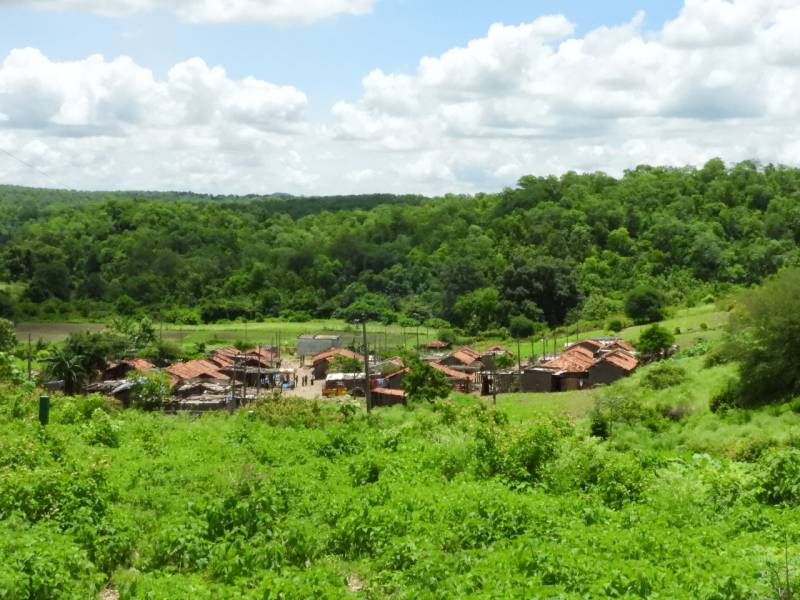
The last five months of struggle with COVID-19 has induced several changes in peoples' lifestyle. For the aboriginal tribes of former composite Adilabad district in Telangana, however, the changes also meant back to basics.
Scientists and medical and health professionals may have looked ill-equipped, initially, to deal with the evolving gloomy situation but, despite being among the most disadvantaged communities in the country, the aboriginal people seem better equipped to tackle the pandemic. Yes, the forest-dwelling communities have their age-old customs and traditions with regard to disease prevention which, are a perfect match with the precautionary steps given under the COVID-19 protocol issued by governments and bodies like World Health Organization (WHO).
"It was sometime in the second week of March (2020) that we first heard about the need to maintain social distancing, sanitize hands regularly, and put ourselves in isolation to control the spread of coronavirus infections," said Mandadi Ishru, a Raj Gond tribe elder from Shettihadapnur village in Janioor Mandal of Kumram Bheem Asifabad district. "These aspects of the life of indigenous tribes are not new to us though a majority of our people has discontinued the customs related to control of seasonal diseases," he stated during an interaction with this writer.
The new reality brought forth by the Novel coronavirus, nonetheless, has seen resurgence what with many ethnic families falling back upon the old practices in question. These relate isolation and personal hygiene, both individually and collectively.
According to Here Kumre Nagu, Telangana High Court advocate and retired Labour Commissioner with Telangana government who is a Raj Gond tribal from Mutnur village in Indervelli mandal of Adilabad district the practice of isolation in control of diseases was part o the life of aboriginal tribes until a generation back. "During the 1918 Spanish flu epidemic that ravaged these parts, my grandmother Laxmi had isolated herself and her two young sons in an agriculture field for 45 days to prevent infection to the children," he summed up from what he recollected of his father's narrative of the over a century old happening.
In the present COVID-19 times, isolation had become a collective effort as described by Athram Bheem Rao, the Kolam tribe sarpanch of Gowri in Jainoor mandal. "No one ventured out of the habitations between the start of lockdown on March 22 until the unlock process started in June," he pointed out.
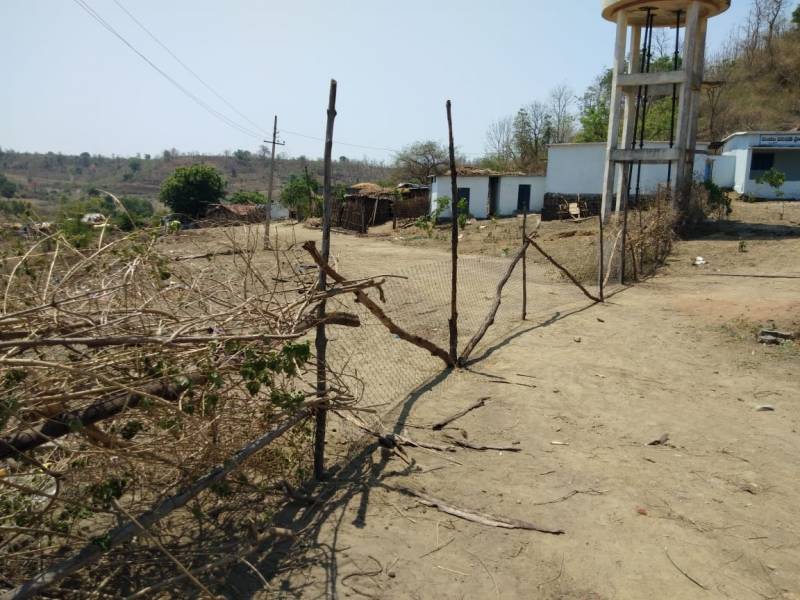
Wooden barricades at the entrance of Gowri Kolamguda
Social distancing has always been a part of life inside the forest habitations and was seen being practiced during the lockdown phase. The unique manner of traveling on foot had always had the aboriginal people walking in a single file and also maintaining a few feet distance between two individuals.
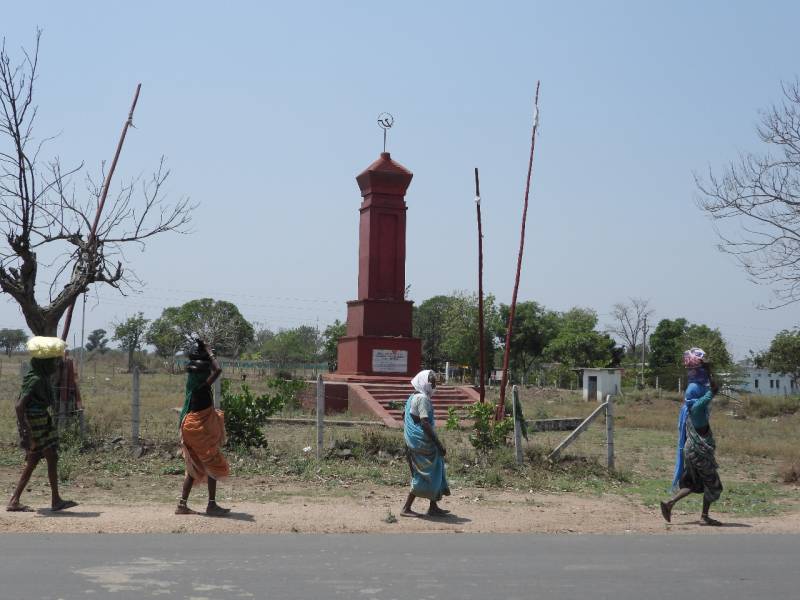
Indigenous tribe women carrying back rations to their village while maintaining social distancing at Indervelli
The old undivided Adilabad district is the northernmost district in Telangana State which was reorganized in September 2016 as residual Adilabad, Kumram Bheem Asifabad, Mancherial, and Nirmal districts. The combined district has a population of 27.4 lakh as per the 2011 Census.
The population encompassed the Scheduled Tribes population of about 4.96 lakh of which roughly 3.5 lakh are aboriginals. There are nine sub-tribes within the ethnic tribes’ category in Telangana of which seight, the Gond (Raj Gond), Pardhan, Kolam, Thotti, Naikpod, Andh, Koya, and Mannewar are found in the hilly interiors of erstwhile Adilabad.
After the division of the district, Adilabad has retained about 2.25 lakh of the Scheduled Tribe population while nearly 1.34 lakh live in areas covered by the KB Asifabad district. Mancherial and Nirmal districts have a tribal population of 56,969 and 82,769 respectively.
Most of the population, the majority being the Raj Gond, lives within forests or on forest fringes, agriculture being its main occupation. The collection of minor forest produce like wild fruits, gum, and honey and hunting of wild animals is on the decline.
The lifestyle of the indigenous people suggests that they have been ravaged by epidemics, mainly malaria, and diarrhea from time to time especially during the monsoon. Given the necessity, the tribes had hit upon methods to insulate themselves from seasonal diseases which, in due course became part of their culture and tradition.
The most fundamental of these methods of prevention of infection is personal hygiene. "Whenever a person came back from his agriculture field or returned after visiting someone in the same village he needed to wash his hands and feet before entering his house," Mr. Ishru revealed of the practice, is eyes riveted somewhere on the horizon as he makes an effort to recall.
"In case someone had been to another village, he needed to have a bath before entering his home.”These acts are nothing but part of sanitization," he added, a smile lighting his wrinkled face, apparently to say that what the WHO has prescribed is not new the ethnic people.
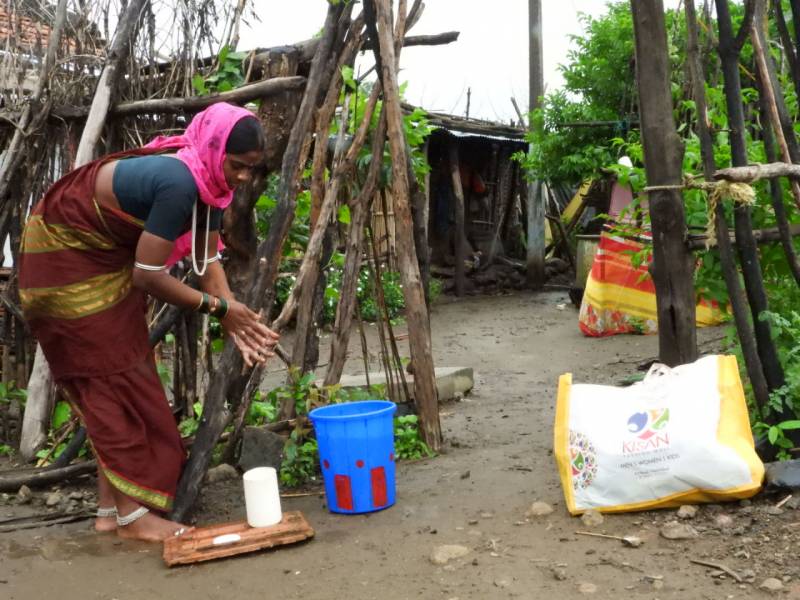
Individuals washing their hands before entering their house in Valgonda and Gattepally in Indervelli mandal respectively
"Trouble usually starts towards the end of July and continues till the end of August," pointed out another Raj Gond elder Kumra Vittal Rao from Gattepalli in Indervelli mandal of Adilabad district who has studied vanishing tribal customs and traditions. "Most of our disease control measures are witnessed within this time span," he observed remembering given aspects.
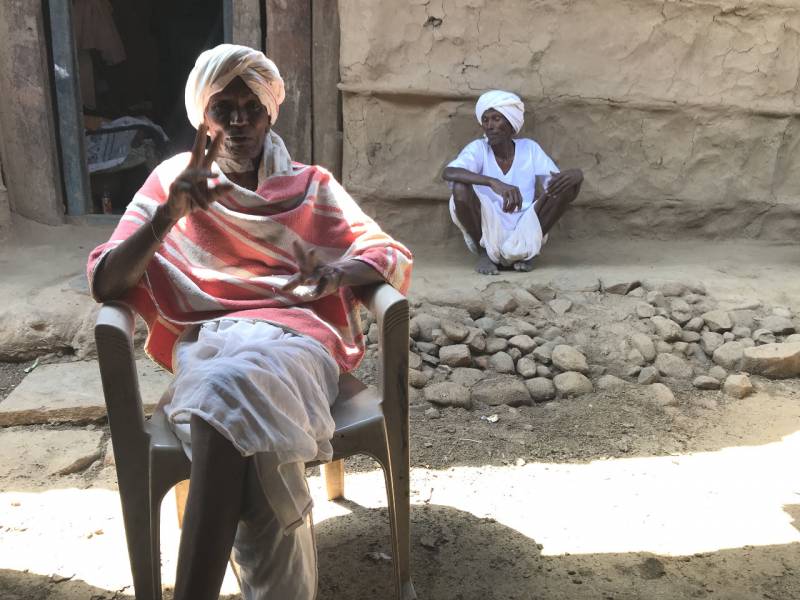
Mandadi Ishru, the Raj Gond elder from Shettihadapnur
The 'shivabodi' is celebrated at the beginning of the Gondi month of Pola, coinciding with August (Shravan month as per Hindu calendar). A goat is sacrificed and stuffed with locally available leaves and plants which are supposed to be of medicinal value before hanging it from a tree on outskirts of a given village.
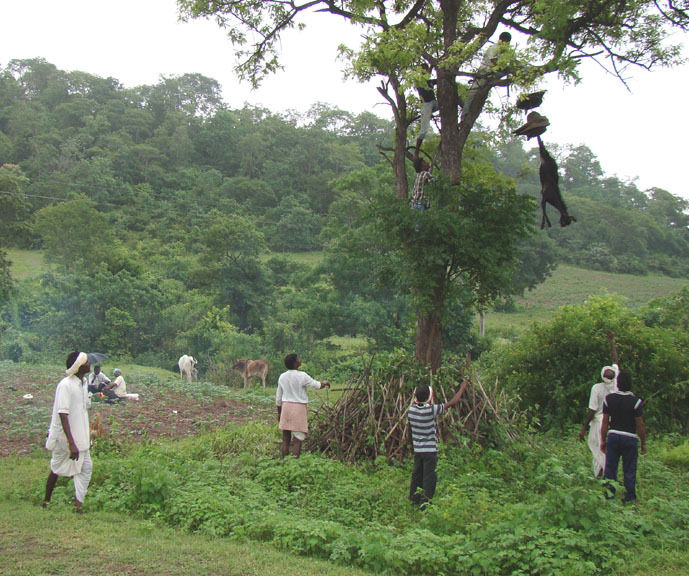
Goat being hung from a tree at Surdhapur in Kerameri mandal as part of Shivabodi rituals
"The goat is hung in the direction from where the wind flows into the village only to ensure that it carries with it the medicinal properties of the plants and leaves stuffed inside the hollowed-out goat," disclosed Athram Lingu of Surdhapur in Kerameri mandal of KB Asifabad district as he sheds light on the rationale of the age-old custom. This custom is still alive in the ethnic habitations.
"At the beginning of the month of Pola, stilts are made with new bamboo for children to play with. Children use the stilts called khodang in Gondi to walk through the monsoon slush towards agriculture fields," Mr. Vittal Rao said of an endearing activity which is still alive in tribal villages.
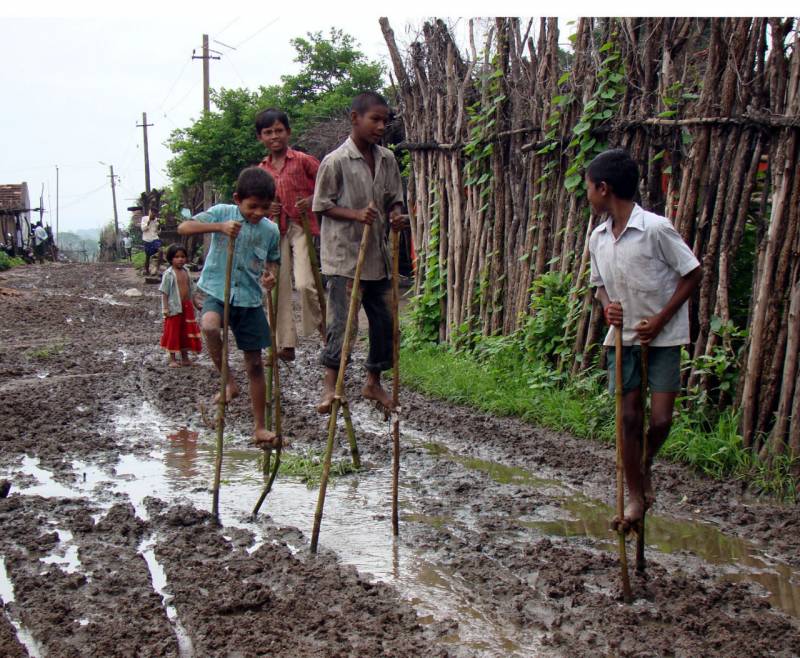
Children on stilts in Valgonda village of Indervelli mandal
"Stilts protect children from snake bites and other water-borne diseases," the Raj Gond elder stated as he divulged of the science behind the technique. The month ends with badaga which has elaborate rituals ending with the discarding of the stilts as well as any other household articles made of bamboo on the outskirts of the village, symbolically truncating the relationship with the old and hoping to have seen the end of seasonal diseases," he ended his narration, a sense of pride lighting up his face.
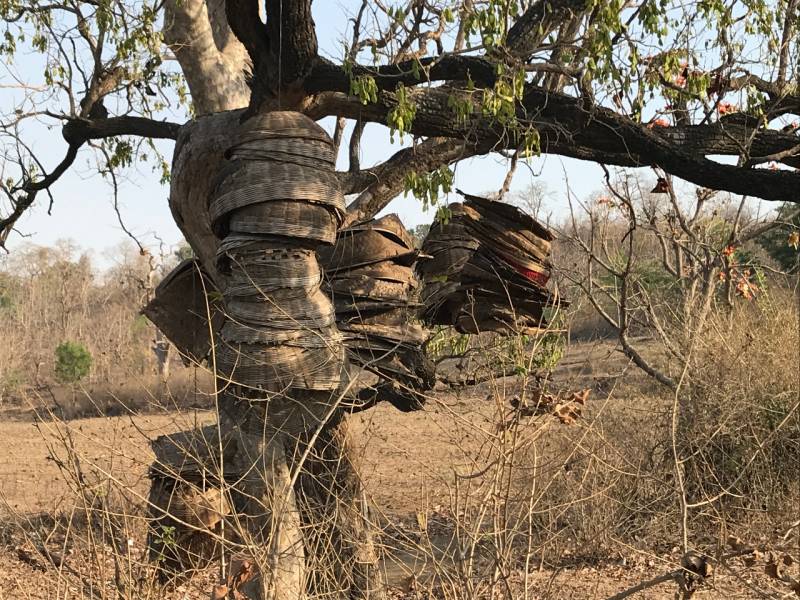
Old bamboo household articles hung from a tree as part of badaga rituals, at Pangri village in Sirpur (U) mandal Kumram Bheem Asifabad district
"Disease prevention activity was an integral part of the life of indigenous tribes to a greater extent," said Dr. Kudmetha Manohar, the Deputy District Medical and Health Officer for the Scheduled areas in old undivided Adilabad district as he recalled his childhood. "For example, a stranger was never allowed close to a well to prevent contamination of water in it, the well being the only source of drinking water in any given village," he explained.
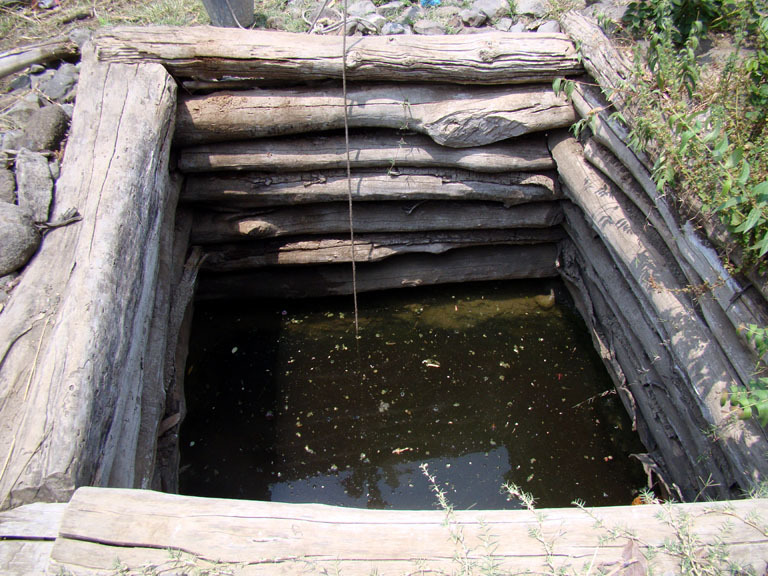
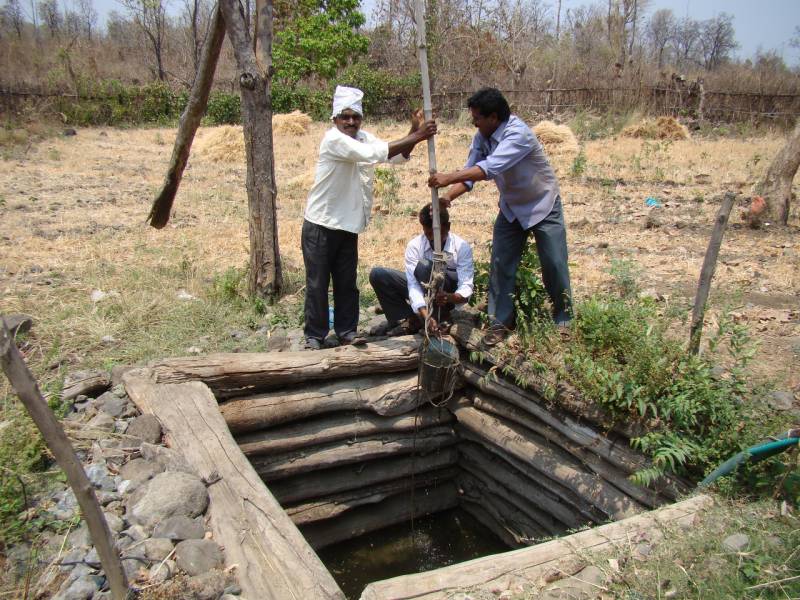
Traditional well near Pedda Dhoba in Sirpur (U) mandal
Mr. Vittal Rao also talked about a practice that is progressively decreasing on the rigidity but was essentially meant to safeguard women from contracting diseases when they menstruated. This is the practice of isolating a menstruating woman, a phenomenon which, according to Dr. Manohar, is the most misunderstood aspect of tribal life.
"The Gonds have 'saivan' a separate room within their house to isolate menstruating women while the Kolam villages have 'koppi' a separate hut or huts at the end village," Mr. Vittal Rao revealed as he talked about the practice.
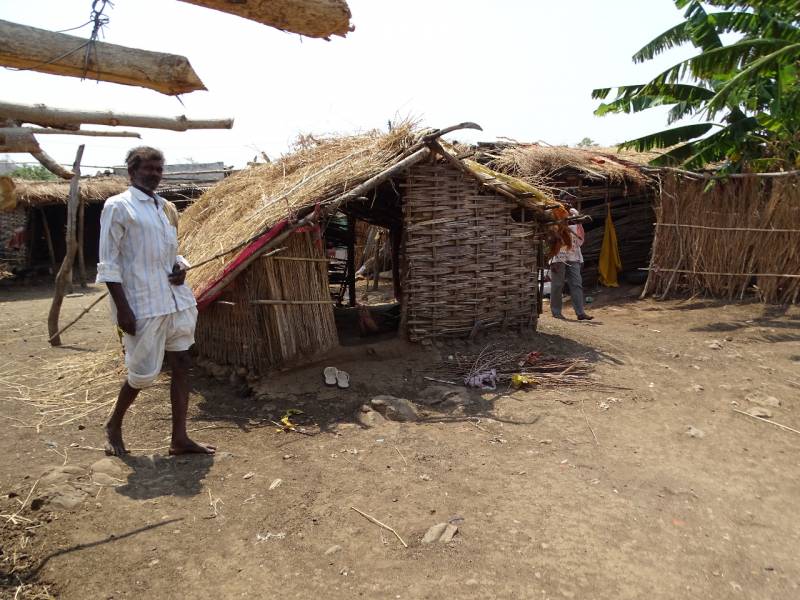
Koppi isolation hut at Pataguda Kolamguda in Indervelli mandal of Adilabad district
"Even my wife had to stringently follow the practice when I lived at Kobbaiguda between 1993 and 1995. It seemed proper under the circumstances," he added as he justified the practice.
"It may seem absurd today but the ancestors of today's tribals must go by their experience and the koppi must have served as an ICU," said Dr. Manohar. "Back then, due to lack of modern medicine, isolation would have been the only preventive method as women were considered more prone to diseases during their menstruating period," the doctor observed by way of presenting the rationale.
The customs and discipline of the ethnic tribes had prevented the COVID-19 from entering their habitations until the end of July. Only one Raj Gond woman from Pangri in KB Asifabad had tested positive until then as she was infected while accepting pension from a COVID-19 positive branch post master.

Pangri village located deep inside Tiryani mandal of KB Asifabad district
The unlocking of the restrictions, however, changed the scenario and it coincided with the onset of agriculture season requiring the ethnic people to travel. This has resulted in five individuals each from KB Asifabad and Adilabad out of 300 and 800 positive cases, respectively.
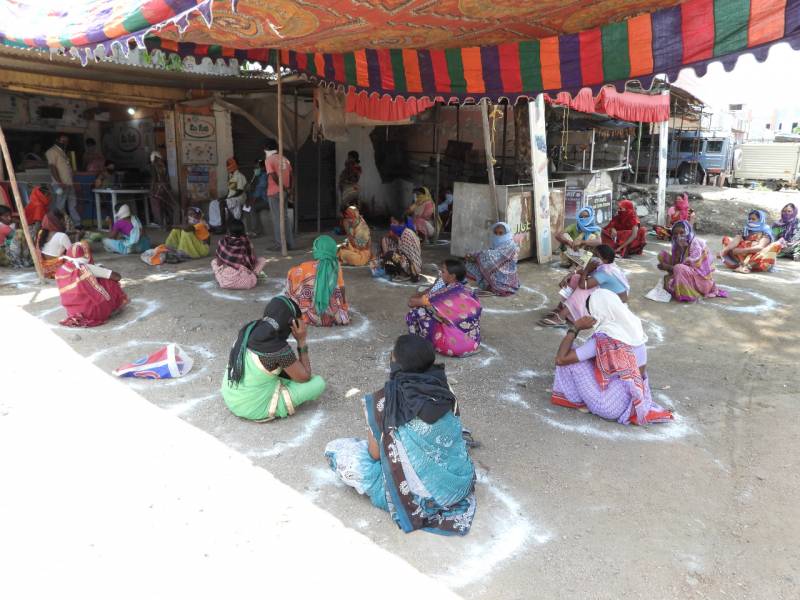
Women of indigenous tribes waiting patiently for their turn to draw the COVID-19 assistance at a Mee Seva Centre
By S Harpal Singh
This story has been published as part of the Internews Information Saves Lives: Rapid Response Fund project to NewsMeter